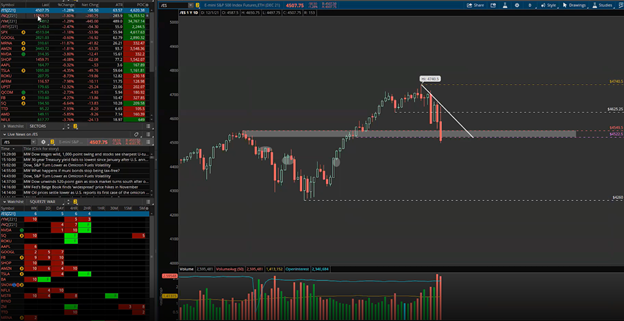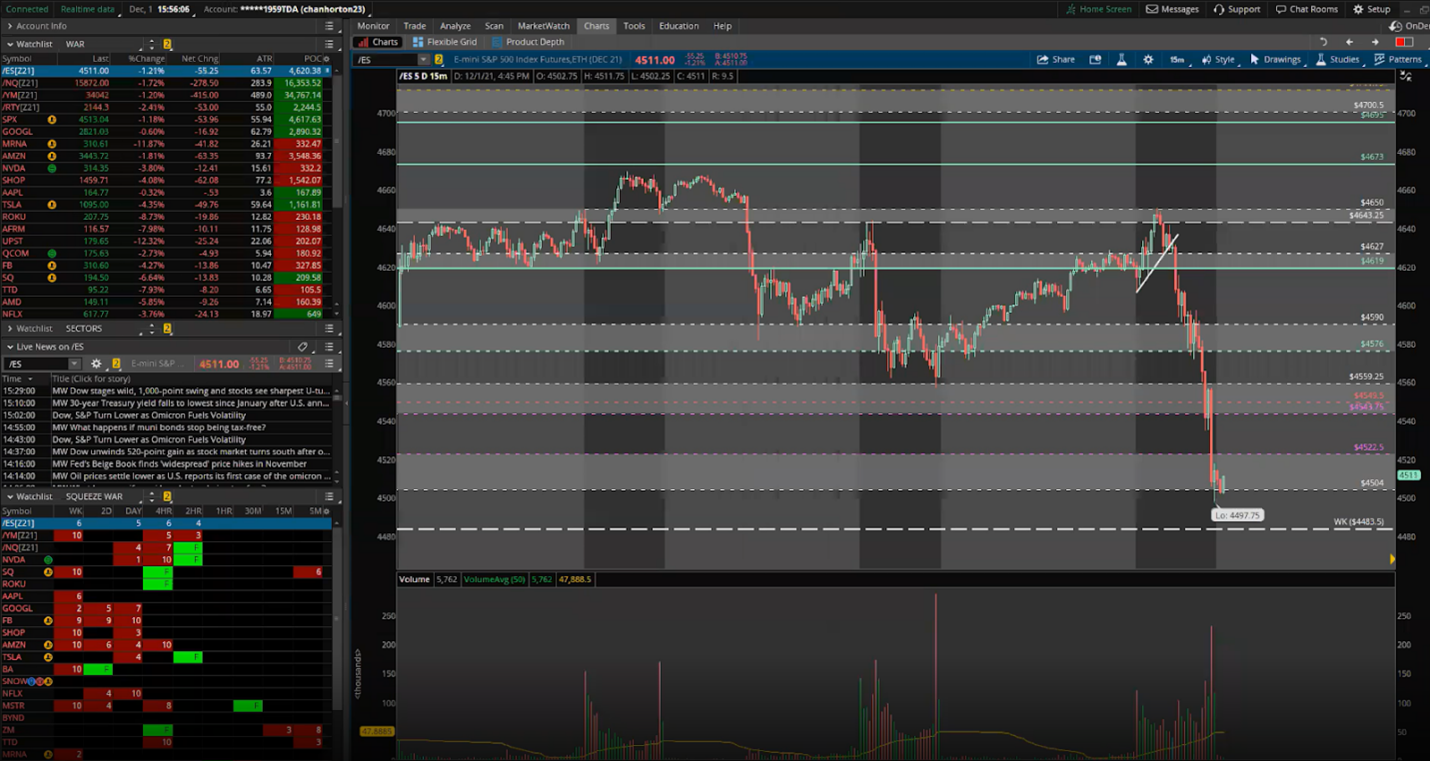Chandler Horton, director of day trading at Simpler Trading, dives into his best practices and tells you how he plans his trading day and gets ready for the market.
The stock market is a complex and unforgiving operation. Staying disciplined and having a plan in place for each day is key to making money and keeping your sanity! It can be tough to know how to prioritize the work and get focused. Sometimes it’s helpful to learn about other day traders’ routines and how they organize their daily trades. So, here’s a day in my life as a trader…my daily routine and the tasks that help me stay successful in the markets.
My Daily Trading Routine? It All Starts With Nightly Planning
Being a day trader and a shorter-term options trader really comes down to preparation. I like to use the old saying, “plan the trade; trade the plan.” And because my trades are all short term, I’m really going after new opportunities on a daily basis. So this requires me to have a routine that lets me plan my trades on a daily basis.
To learn more about my daily trading routine, it’s actually more accurate and helpful to look at my evening preparation routine—that’s where the real work happens. I spend a great deal of time preparing potential trades and options setups for the next day after each session ends. I find that sitting down post-session allows me to digest and really understand what happened in the market and outline my opportunities for the next day.
First off, I like to manually prepare my potential trades by organizing them into bullish and bearish trends. This way, I’m productive as soon as the markets open, and I’m ready to react to whatever the markets throw my way.
So here’s a breakdown of my pre-trading tasks that are part of my daily routine.
Study the Markets
I always start my prep by studying the entire market. I especially look at the ES, YM, and NQ. This gives me the big-picture view. From there, I map where I think the market’s next step will be.
Here’s an example of a trend from a recent trading day. This is clearly bearish. I took this trend and mapped where I thought it would go and when it might reverse. By walking through this work, I was better prepared to trade that trend the next day.

Check My Indicators
Indicators are important in day trading. As part of my routine, I run through my system and check my indicators. This information helps me build a thesis that I can describe. I like to have multiple reasons to facilitate trades, so I look at evidence coming from multiple sources.
I like to go to an intraday chart, which helps me see my zones of interest more clearly. And then I tack on my key levels. I do this so I can build a plan for the market whichever direction it may go.
Build a Stock Watchlist
Most day traders’ routines likely include building a stock watchlist. For me it’s a no-brainer, and I make sure to review mine each day. I really only end up trading about half the list so a lot of my research goes unused…but isn’t that just the life of a day trader? I always prefer to be over prepared rather than underprepared.
Build an Options Watchlist
As an options trader, my daily trading routine includes building my options watchlist as well. So once I have my bigger-picture plan, I run through the options chain and look for options that make sense with the market. I add complimentary strikes above and below what I’d like to trade.
Review Planned Events
Prior to my trading day I like to review planned events. I like to look at the United States economic calendar. Some of the things you’ll want to look out for are ADP job reports, speeches or reports from the Treasury or Federal Reserve, and updates from the CDC regarding the coronavirus. All of these events can and do affect the market because they all relate to the economic health of the country.
For example, in the chart below you’ll see a large dip. That dip occurred after Federal Reserve chairman Jerome Powell spoke. Because I knew that he was going to speak, I was prepared in advance to short the position.

I’ve found that trading is all about reading your charts and reacting to that information. Preparing for that reaction the night before makes my daytime trading routine function more smoothly and successfully.
Daily Trading Tasks
After one last review in the morning, I’m ready to start trading, armed with my pre-session preparation.
As I go through the session, I work my plans. So my daily trading tasks are driven by matching up what I see in the market to the set of “if-then” scenarios I’ve created the night before. Because I’ve built my plans up and down, many times I’m able to react quickly.
A big part of my routine is looking at the stocks on my watch list. Throughout my day I go through my list, finding what looks really good—nice squeezes for example. I’m always looking for catalysts.
In addition, I monitor my options: I usually pick three to five names that I’m focused on to work during the trading day. Because I’ve already laid them out on the watchlist, with strike prices, I know during the trading day what I want to buy and at what strike.
In addition to studying my screens, I always keep an eye on the news. While I’m already prepared for known economic or market events, news happens all day long and unplanned events can definitely throw a wrench in the day. I look to Twitter for the most up-to-date information; you can follow me @focusedchan to see my Trading News list.
End Game - Analyzing Your Trading Day
At the end of the day I analyze my trading session and take notes on what worked and what didn’t. For the trades that did work, I review what worked and if my thesis held true. After I’ve looked over my trades, I take my notes and start planning the next day all over again.
Would you like a simpler trading routine? For more information and education on day trading and trading strategies, be sure to visit us at simplertrading.com.




















